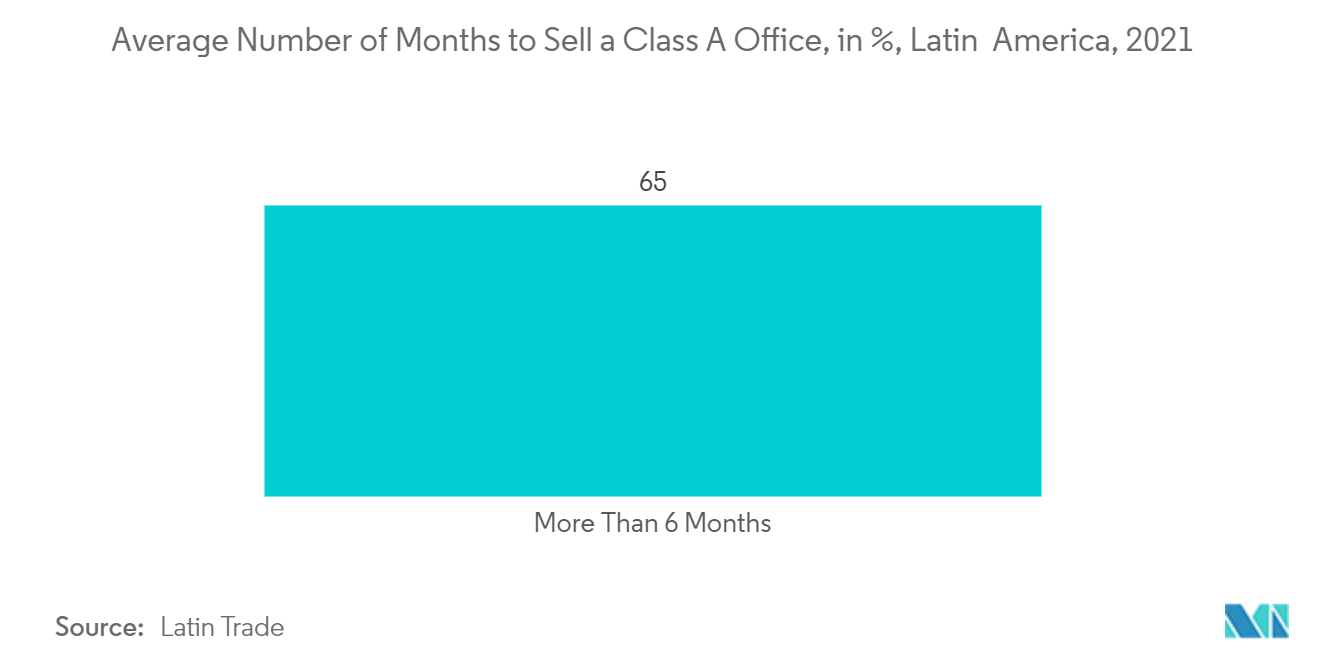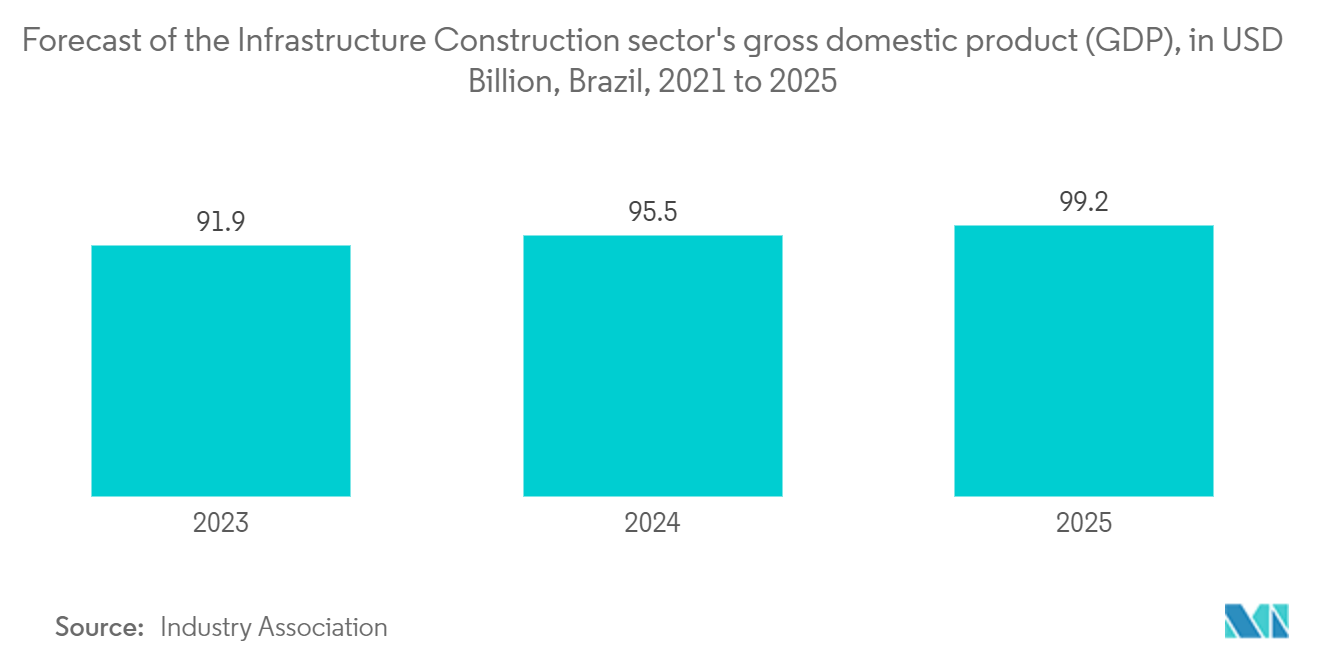Market Trends of Latin America Commercial Real Estate Industry
Recovery in Premium Office Segment Boosting Commercial Real Estate Market in Latin America
- In Latin American cities with populations of less than two million people, there are signs of a recovery in the market for premium offices.
- In 2021, in cities with populations under 2 million, such as Monterrey and Montevideo, the price per square foot on sales of prime office space exceeded USD 280, indicating a severe lack of inventory. At the same time, leases for premium offices in those cities surpassed USD 1.68 per square foot, indicating that there is still room for more supply.
- In June 2021, the WTC Prime Office Index Latam's expectations indicator was -19%. This confirmed that expectations had improved since December 2020, when they were -32%.
- In the premium office market segment, innovation will be critical to success. In this regard, some of the new World Trade Centers are setting new benchmarks. WTC Montevideo (a building complex in Montevideo, Uruguay) recently completed the construction of a second tower in the city's free-trade zone. It was created as a niche player, focusing on service-exporting businesses. Coworking and startup spaces are also available in the building.
- WTC Goiânia (a business networking company in Brazil) was designed around a concept that will change the mix of living spaces, work, commerce, and social relationships in the most important city for Brazilian agribusiness. A hotel, offices, apartments, commercial areas (including a 2,635 sq. m. shopping mall), and meeting spaces, including a convention center, will be housed in the two towers.

Growth in Infrastructure Sector Driving the Market
- Latin America offers a wide variety of infrastructure investment and development opportunities. Institutional investors will find more opportunities in certain parts of the region than in others.
- Many regions around the world have had infrastructure gaps for years. The Global Infrastructure Hub estimates that by 2040, there will be a USD 15 trillion gap between projected investment and the amount required to provide adequate infrastructure.
- According to the Inter-American Development Bank, the gap in Latin America is estimated to be 2.5% of GDP or about USD 150 billion per year. Sanitation, communication, logistics, housing, and energy have all accounted for a significant portion of this.
- Brazil has established itself as the country with the best prospects right now. It announced the resumption of public auctions in the infrastructure sector, with six taking place in H1 2021. The concession of coastal highways (worth USD 556 million) and two commuter rail lines (worth USD 467 million) are the country's two largest projects.
- Outside of Brazil, investors have also discovered opportunities. In 2021, CPPIB, along with IDEAL and the Ontario Teachers' Pension Plan, invested in toll roads in Mexico. It also invested in natural gas pipelines with TgP in Peru and toll roads with Grupo Costanera in Chile.
- Investors have found a very mature infrastructure market in Chile, which is an OECD member, and it will not be difficult for them to attract capital.

